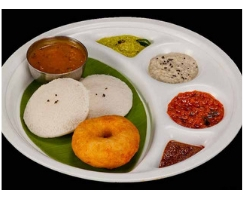
Moderation. Small helpings. Sample a little bit of everything. These are the secrets of happiness and good health.
-By Julia Child
Now that you’ve got all the motivation, just need to eat the right way to lead a healthy life! And you can only do it when you are aware of what exactly you are eating and how they are helping you to shape a better lifestyle.
And it is highly recommended to know your food and the properties it inherits because when you include various foods in your diet, you are more likely to get each of the nutrients your body needs for good health. Also, each food group supplies certain key nutrients that aren’t as prevalent in the foods from other groups, which is what makes a variable diet so important.
In this piece, we have summed up all the vital information about food groups for you. Take a quick look and plan your meals accordingly.
Nutrients in the food: The nutrients are classified as –
- Energy Containing Foods – Carbohydrates, Proteins and Fats. These are called -Macronutrients.
- Energy releasing foods – They participate in the chemical reactions that convert food into energy. Most of the Minerals and Vitamins fall under this category. These are called -Micronutrients.
- Protective foods: These protect our body from free radical damage. Some Minerals, Vitamins, Carotenoids, Flavonoids and other phytonutrients fall under this category.
- Water
Carbohydrates: These are made up of (a) Glucose (b) Fructose (c) Galactose and (d) Fiber. Since these nutrients have different effects on the Insulin Resistance (IR), each nutrient will be discussed separately. In case if you don’t know, Insulin Resistance causes most of the metabolic syndromes.
Glucose: Grains and Vegetables are the main source of this nutrient. The rate at which glucose is released from this chain and enters the blood is called Glycemic Index (GI), of that food. Food with higher GI causes insulin surge into the blood.
Fructose: Natural sweeteners like Sugar, Honey etc and fruits are the main sources of this nutrient. While Glucose enters the blood directly and is used as energy by all the cells, Fructose has to go to liver to get it converted into the form that can be used by the cells.
Galactose: It is a part of the milk sugar. While milk and curd are low GI foods, they are high insulin producers. So curd, which is normally eaten along with refined grains, can make you fat or increase the chance of making the individual Insulin Resistance and therefore, increases the occurrence of Lifestyle Diseases (LSDs). That is the reason why Ayurveda considers buttermilk healthier than curd.
Fiber: It is of two types: (A) Soluble fiber and (B) Insoluble fiber. Both come from plants and are forms of Carbs.
- Soluble Fiber:Most of the fiber supplements contain soluble fiber. It attracts water and slows digestion so you feel fuller longer. Good sources of soluble fiber are: Flax seed, Dals, Peas, Nuts, Vegetables (Carrot, Beetroot, Green Banana) and fruits (Guava, Orange, Mango etc). Soluble fiber lowers cholesterol, keeps blood sugar stable, reduces constipation and helps in losing weight.
- Insoluble Fiber:The insoluble fiber does not absorb or dissolve in water. Good sources of insoluble fiber are: Brown rice, Whole wheat Atta, Greens, Vegetables like Beans, Cauliflower, Cabbage etc. It reduces constipation; maintains digestive health and helps in losing weight.
Proteins: Proteins are made up of Amino Acids. There are 20 amino acids that make up the human protein. Out of these, the average adult body cannot synthesize 8, so they need to be provided in the diet. These are called essential amino acids. The following points should be kept in mind while consuming the protein.
- Protein is required to maintain muscles, transport oxygen, support metabolism, fight infections and to maintain blood sugar levels in between the meals.
- The requirement varies from 0.8 to 1.0 gram per kg of body weight, depending on whether the protein is of animal origin, or of vegetarian origin or of a mixed origin.
- Daily quota of protein has to be equally divided among all the meals. This is essential because protein is required to maintain blood sugar levels between the meals and also there is no storage capacity in the body for protein.
- If enough protein is not provided in the meal, body uses the muscle to meet its protein requirements. Since the calorie burning capacity of the body is determined by the quantity of muscle mass, loss of muscle leads to weight gain and lowers metabolic rate in the long run.
Fats: Fats are made up of Fatty Acids and are divided into 3 types –
- Saturated Fatty Acids (SFAs): In Indian diet, these come mainly from Ghee and Coconut oil. They are implicated in heart ailments. World health Organisation (WHO) recommends that up to 10 % of fat consumed should be in the form of SFAs.
- Monounsaturated Fatty Acids (MUFAs): They are central part of heart healthy Mediterranean diet. Olive oil is the most well known source of MUFAs. Among the cooking oils used in India, Groundnut oil has maximum MUFAs followed by Gingelly oil. But one should not consume more than 25 gms of cooking oil per day, even if it is olive oil.
Here’s how we can help you
Your plan of healthy and clean eating should include all the nutrients and we help you to identify food groups that are deficient and excessive in your daily intake and then, plan your meals accordingly. In other words, we design a practical nutrition plan for you that is ideal for your lifestyle.
